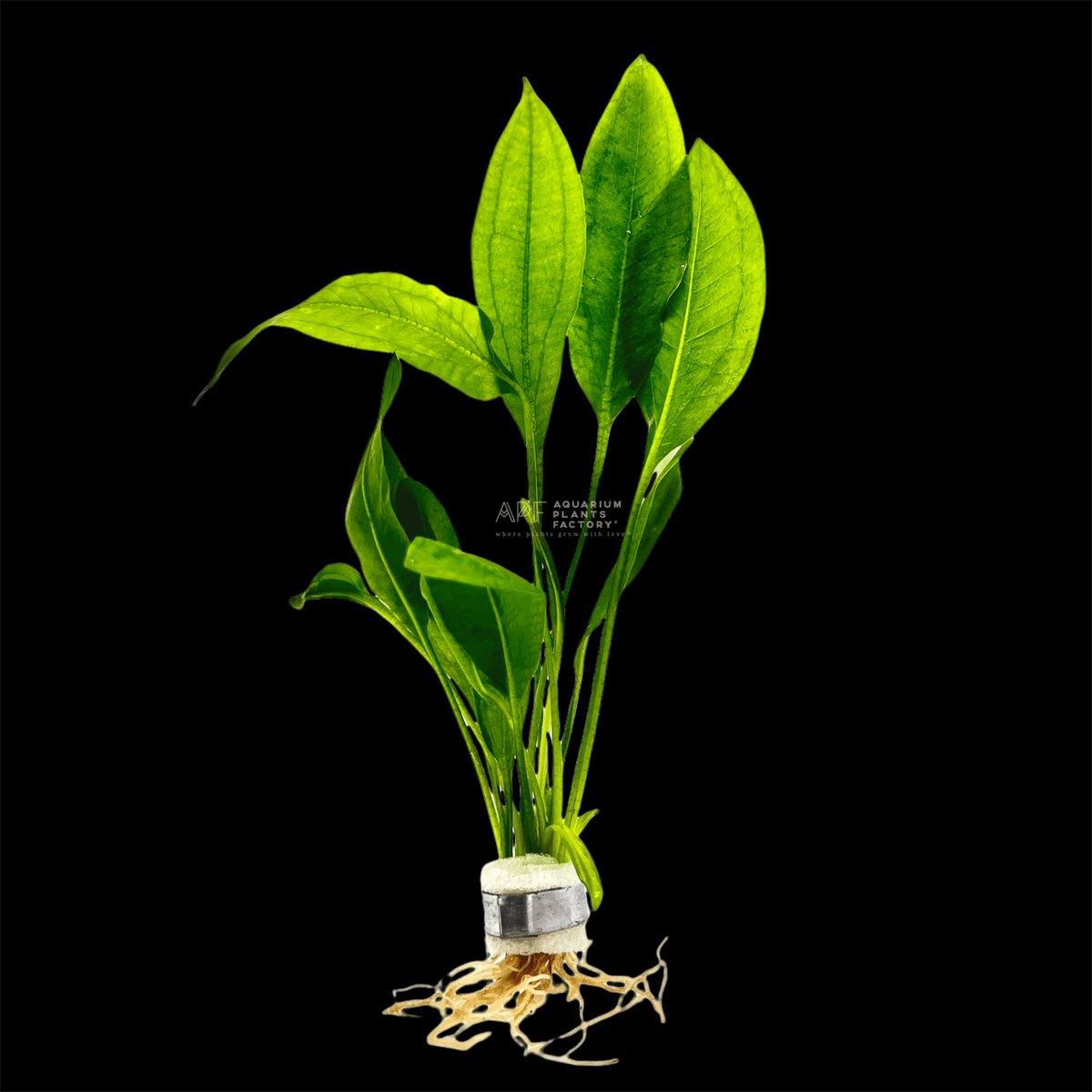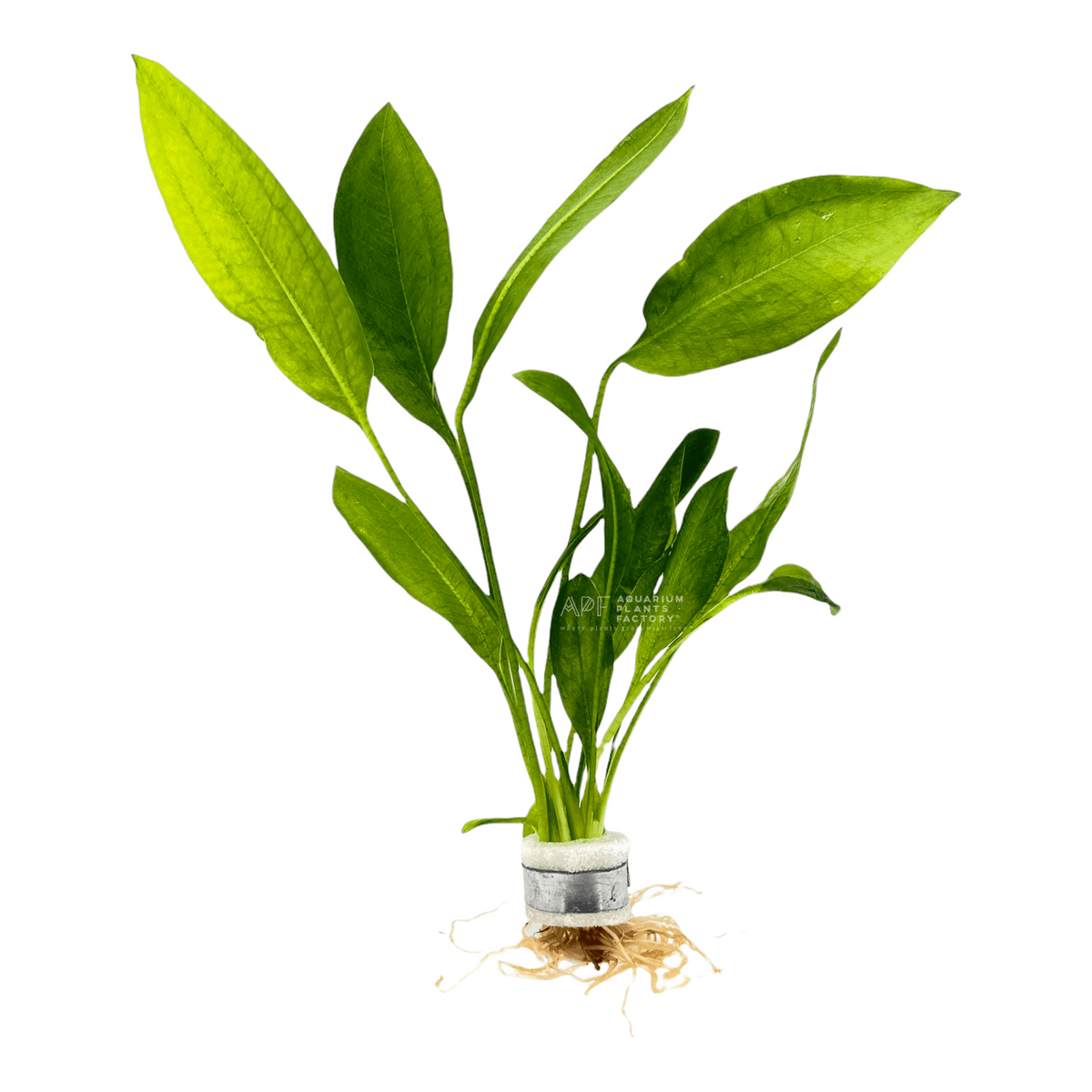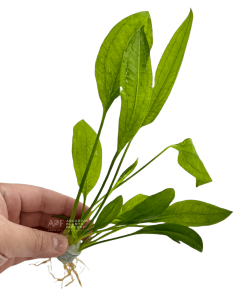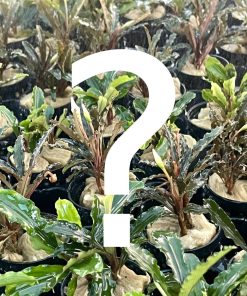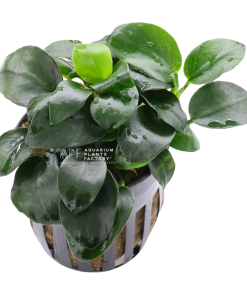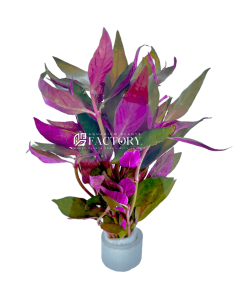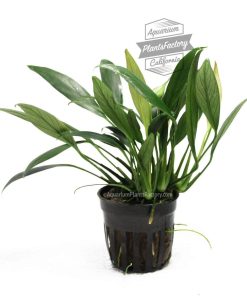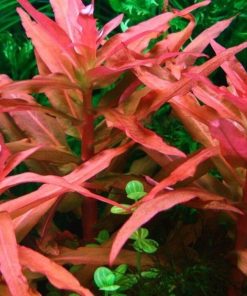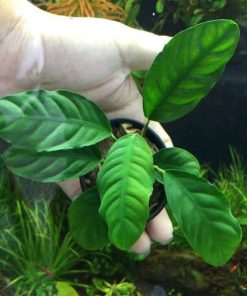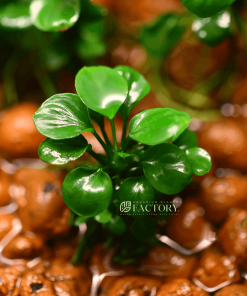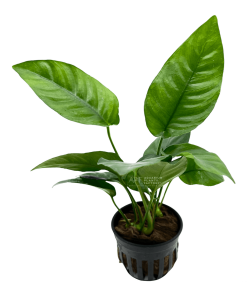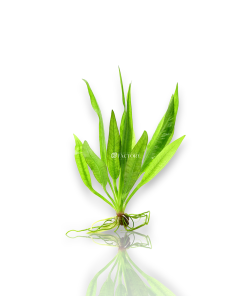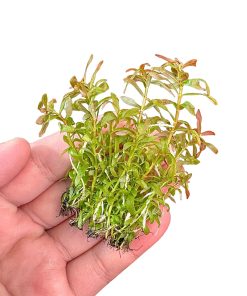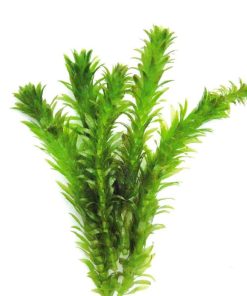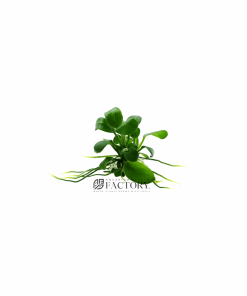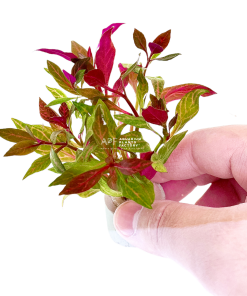Echinodorus Amazonicus Aquarium Plants Factory
$ 6,99 $ 4,19
Echinodorus Amazonicus, also known as Amazon Sword Plant, is a popular aquatic plant that is native to the Amazon River basin in South America. It belongs to the Echinodorus genus, which comprises a diverse group of plants commonly found in freshwater habitats. Echinodorus Amazonicus is widely cultivated and sought after by aquarium enthusiasts for its attractive appearance and ease of care.
The leaves of Echinodorus Amazonicus are typically long and lanceolate in shape, with a vibrant green coloration that adds a lush and natural look to aquariums. The leaves can grow to a considerable size, reaching lengths of up to 40 centimeters (16 inches) and widths of around 8 centimeters (3 inches). This plant is known for its robust growth, and under favorable conditions, it can quickly form dense clusters, providing hiding places for fish and other aquatic organisms.
In terms of care requirements, Echinodorus Amazonicus is a relatively undemanding plant. It thrives in a wide range of water parameters, although it prefers moderate to high lighting conditions and nutrient-rich substrates. Carbon dioxide supplementation can enhance its growth, but it is not a strict requirement. Regular pruning of older or damaged leaves is recommended to maintain its visual appeal and prevent overcrowding.
Now, let’s compare Echinodorus Amazonicus with Echinodorus bleheri, commonly known as Amazon Sword or Bleher’s Sword. One notable difference between the two is the leaf shape and appearance. While Echinodorus Amazonicus has long, lanceolate leaves, Echinodorus bleheri exhibits broader leaves that can be slightly crinkled along the edges. The leaf coloration is also slightly different, with Echinodorus bleheri often displaying darker green hues.
In terms of size, Echinodorus bleheri tends to grow larger than Echinodorus Amazonicus. Its leaves can reach lengths of up to 50 centimeters (20 inches) and widths of around 10 centimeters (4 inches). This makes Echinodorus bleheri a suitable choice for larger aquariums or as a background plant due to its impressive stature.
Both Echinodorus Amazonicus and Echinodorus bleheri have similar care requirements, thriving in similar water conditions and substrates. They are both adaptable and can tolerate a range of lighting intensities and water hardness levels. Additionally, they can serve as excellent oxygenators, improving the overall water quality in the aquarium.
In summary, Echinodorus Amazonicus and Echinodorus bleheri are two beautiful aquatic plants that share many similarities in terms of care requirements. While Echinodorus Amazonicus features long, lanceolate leaves, Echinodorus bleheri exhibits broader leaves. The latter is also generally larger in size, making it a striking choice for larger aquariums. Whether you choose Echinodorus Amazonicus or Echinodorus bleheri, both plants can add a touch of natural beauty to your aquatic environment.
- Sold as emerged bare-root plants, bunched plants, or potted Plants
- Bare-root Plants | approx. 1-2 roots loose bare-root plants
- Bunched Plants | approx. 1-2 roots plants bundled with foam, and lead weight
- Potted Plants | approx 1-2 roots plants potted with rockwood and net pot
Disclaimer: Pictures are not the actual plants you will receive, but a sample representation. Unless specific, we don’t guarantee aquatic plants will be free of pests, pesticides, grow emerged, or submerge.
|
Scientific Name |
Echinodorus grisebachii ‘Amazonicus’ |
|
Synonyms |
Echinodorus Amazonicus |
|
Common Name |
Amazon Sword |
|
Plant Type |
Rosette |
|
Placement |
Background |
|
CO2 |
Not required |
|
Growth Rates |
Slow |
|
Difficulty Level |
Intermediate |
|
Nutrient Substrate |
Required |
|
Can it grow emerged? |
Yes |
|
Lighting Requirements |
Medium – High |
| Emersed Growth | Bare-root Plants, Rooted Bunched, Rooted Potted |
|---|
Fast Shipping with Professional Packaging
Due to our longstanding partnership with UPS FedEx DHL and other leading global carriers, we can provide a range of shipping options. Our warehouse staff are highly trained and will pack the items according to our precise and exact specifications. Your products will be subjected to a thorough examination and will be safely packaged prior to being sent out. Every day, we send thousands of packages to customers from all over the world. This shows our commitment to being the largest retailer online in the world. The warehouses are located in Europe in the same way as they are in USA.
Note: Orders with more than one item will be assigned a processing date according to the item.
Before shipping Our team will conduct a thorough inspection on the products you ordered. The majority of orders are delivered within 48 hrs. The expected delivery time is 3 to 7 days.
Returns
The stock is constantly changing and cannot be fully controlled by us because of the involvement of multiple entities, including the factory as well as our warehouse. The actual stock levels can fluctuate at any point. Be aware that it is possible that your order will become unavailable even after you've placed your order.
Our policy lasts for 30 days. We are unable to return or exchange your purchase when it's been 30 days from the date of purchase.
To be returned, it must be unopened and in the same condition as when you received it in. It must also be returned in the original packaging.
Related products
Uncategorized
Home & Garden > Plants > Aquatic Plants
A Bucephalandra Species [Grower’s Choice] Aquarium Plants Factory
Uncategorized
Uncategorized
Uncategorized
Home & Garden > Plants > Aquatic Plants
Uncategorized
Uncategorized
Uncategorized
Uncategorized
Uncategorized
Uncategorized
Home & Garden > Plants > Aquatic Plants
Uncategorized
Uncategorized
Uncategorized
Uncategorized
Uncategorized
Uncategorized
Uncategorized
Home & Garden > Plants > Aquatic Plants
A Water Lily Species [Grower’s Choice] Aquarium Plants Factory
Uncategorized
Uncategorized
Uncategorized
Uncategorized
Uncategorized
Uncategorized
Uncategorized
Uncategorized
Uncategorized
Home & Garden > Plants > Aquatic Plants

